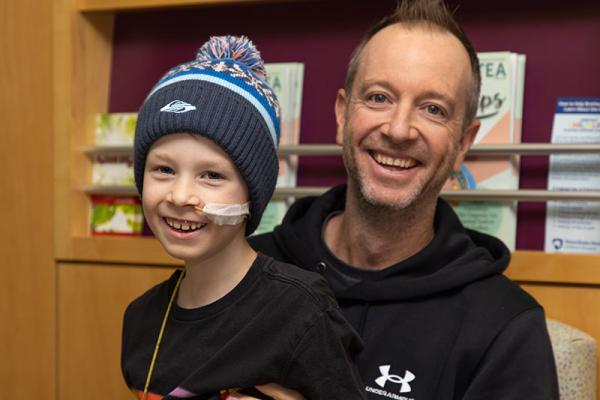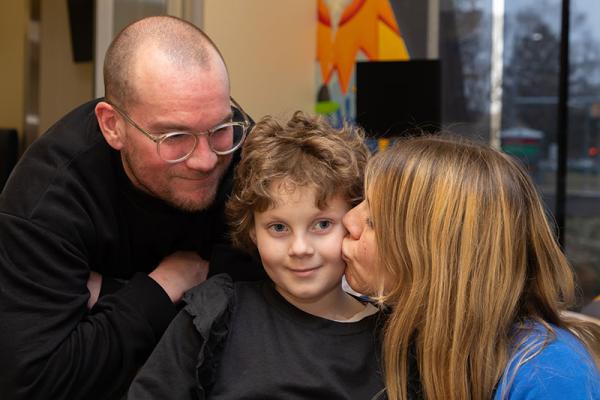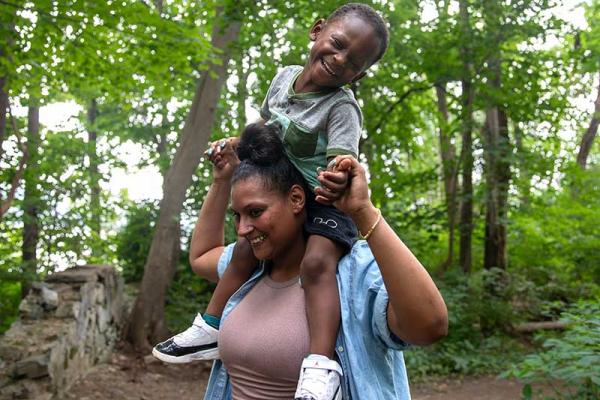
Focus on Fertility: When both partners need assistance
By: Leslie Penkunas
Jacob Eshelman had long suspected that he and his wife Kayla would have difficulties conceiving. They’d started dating in college 10 years ago and have been together ever since. At times, they were less than vigilant about using contraceptives.
“There were so many opportunities for an accidental pregnancy, but it never happened,” Jacob said.
As an in vitro fertilization (IVF) technologist with Reproductive Endocrinology and Infertility at Penn State Health Milton S. Hershey Medical Center, Kayla knows a thing or two about risk factors for infertility. After suffering from painful endometriosis for years, she had laparoscopy in 2019 to remove endometrial tissue.
Following her procedure, Kayla continued to have difficulties conceiving. She suggested her husband meet with a fertility specialist to make sure all was fine on his end. He readily agreed.
A simple test
Providing a sperm sample is “a simple, noninvasive step to see if you’re the reason your wife isn’t able to get pregnant,” Jacob said. “It’s the easiest thing in the world - especially compared to what women have to go through.”
Testing showed no sperm in his ejaculate.
“It was a bit of a relief that both of us were having our own issues, so neither of us felt guilty about being the reason she couldn’t get pregnant,” Jacob said.
After additional tests, Jacob learned that his vasa deferens - a long, muscular tube that transports mature sperm from the testicle to the urethra prior to ejaculation - was completely blocked. He would need surgery to extract the semen for his wife’s IVF procedure.
Harvesting sperm surgically
In April 2020, Jacob went to the Milton S. Hershey Medical Center for a microsurgical testicular sperm extraction. During the procedure, performed under general anesthesia, his surgeon used a microscope to determine which tubules within the testes were most likely to contain sperm. After extracting sperm tissue, he sent it to a lab to see if the harvested amount would be enough.
As Kayla waited for Jacob’s surgery to end, she was nervous.
“I knew from working in the field that this is a hit-or-miss kind of procedure,” she said. “This was our only hope of having a child that is biologically both of ours.”
When the surgeon told Kayla that the harvested tissue contained ample amounts of sperm, she cried with happiness.
Jacob doesn’t like to dwell on the whole sperm extraction experience, saying he doesn’t want to scare men away from the procedure that may help them become dads. He did recount how he wore a jockstrap with an ice pack for a week and was afraid to cough, but then quickly followed by saying that was nothing compared to what his wife had to go through during IVF.
IVF: His wife’s turn
“It was tough. I had to give Kayla two shots every single day,” Jacob said. “I tried to make her comfortable, to minimize the stress. Whatever she asked, I did.”
Kayla’s eggs were retrieved in June 2020 and then fertilized with Jacob’s sperm, yielding five embryos. The first transfer, done a month later, resulted in a chemical pregnancy - a very early miscarriage that occurs when an embryo implants in the uterus and then stops growing at a very early stage. Kayla had additional testing that showed her uterus as “receptive.” She and Jacob decided to try IVF again with one of the remaining embryos.
The second attempt was successful. That baby, a boy named Bennett, was born in June 2021. He’s a happy, very active toddler who loves exploring outside.
“He’s at the age where he’s so much fun,” said Jacob, before excusing himself to go play with his son.





